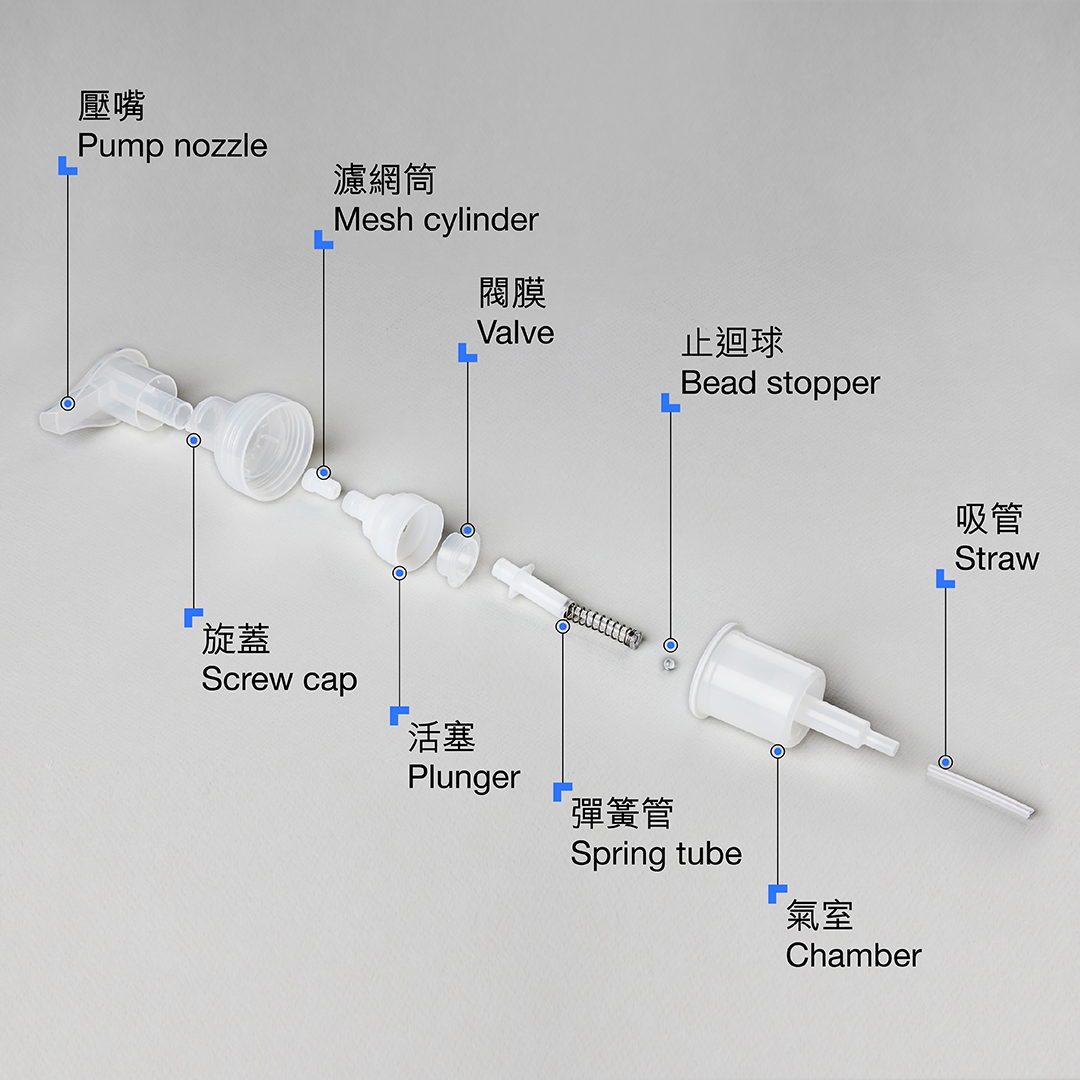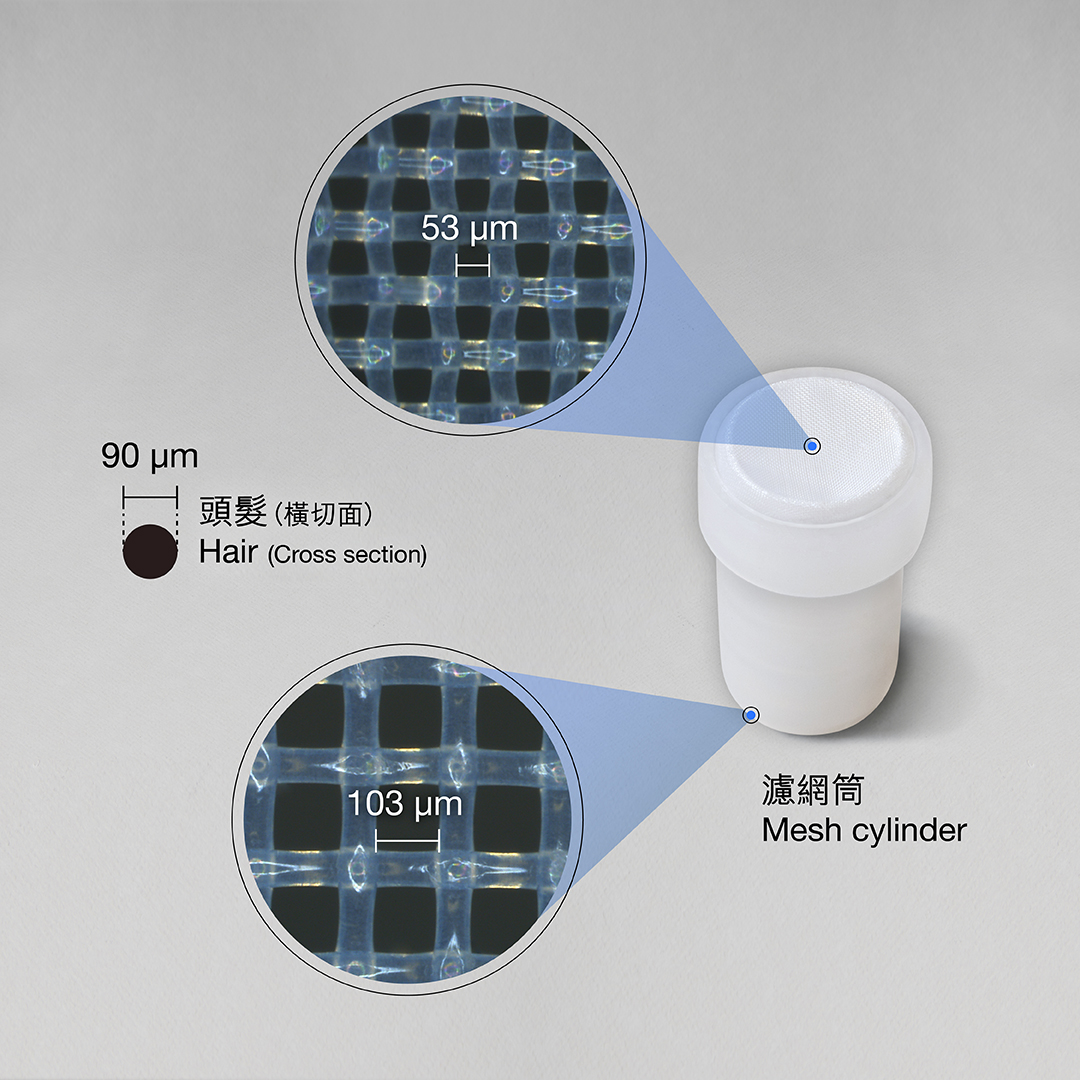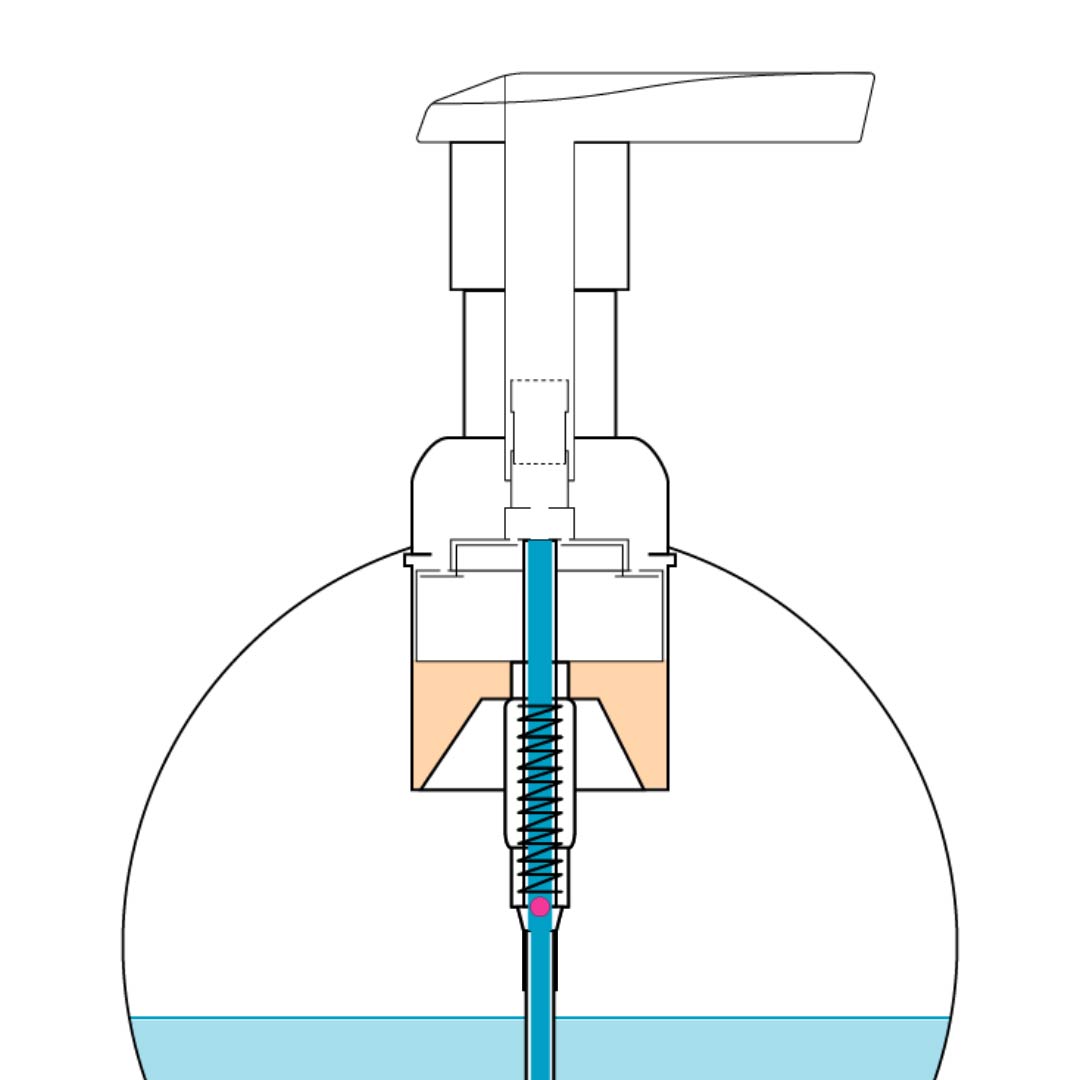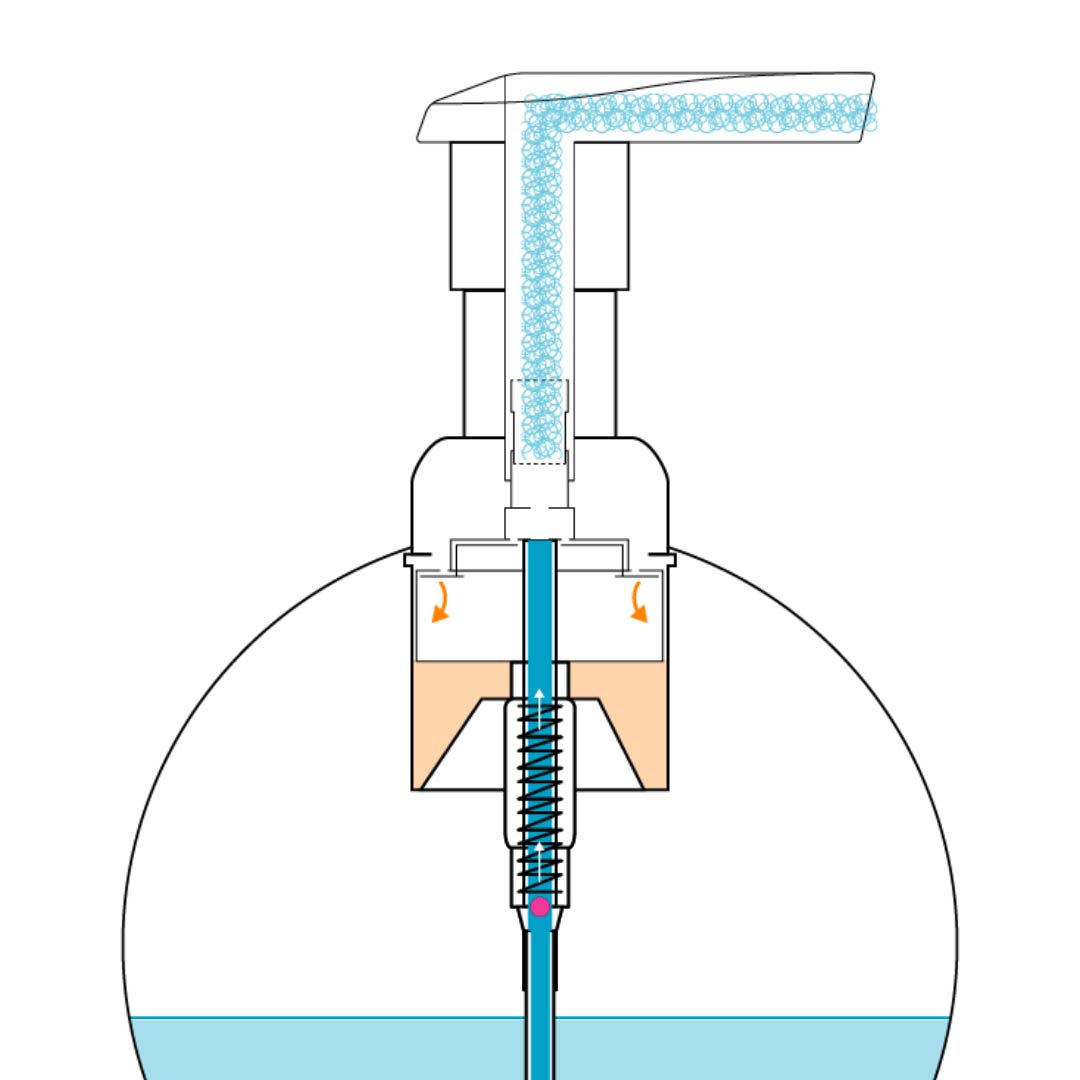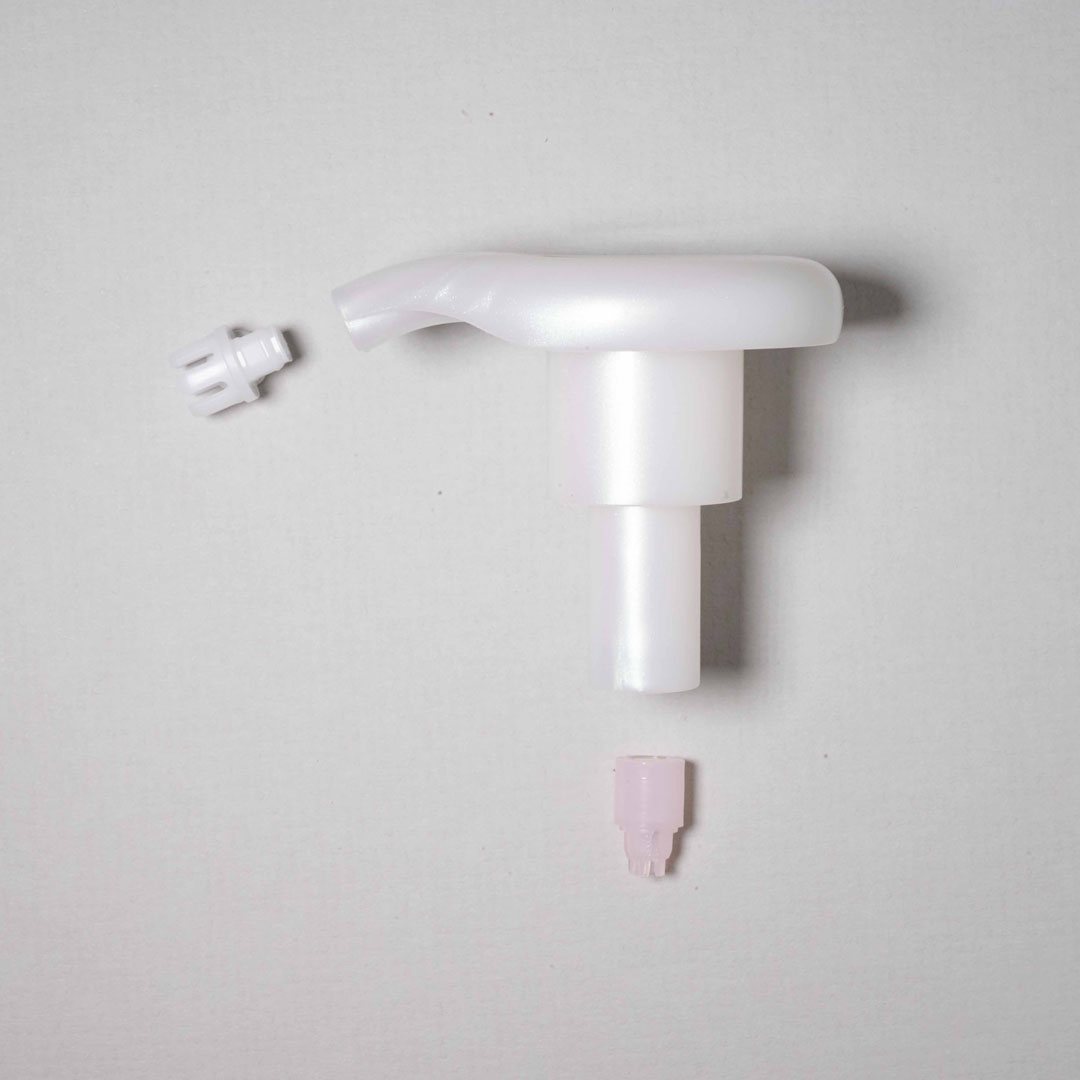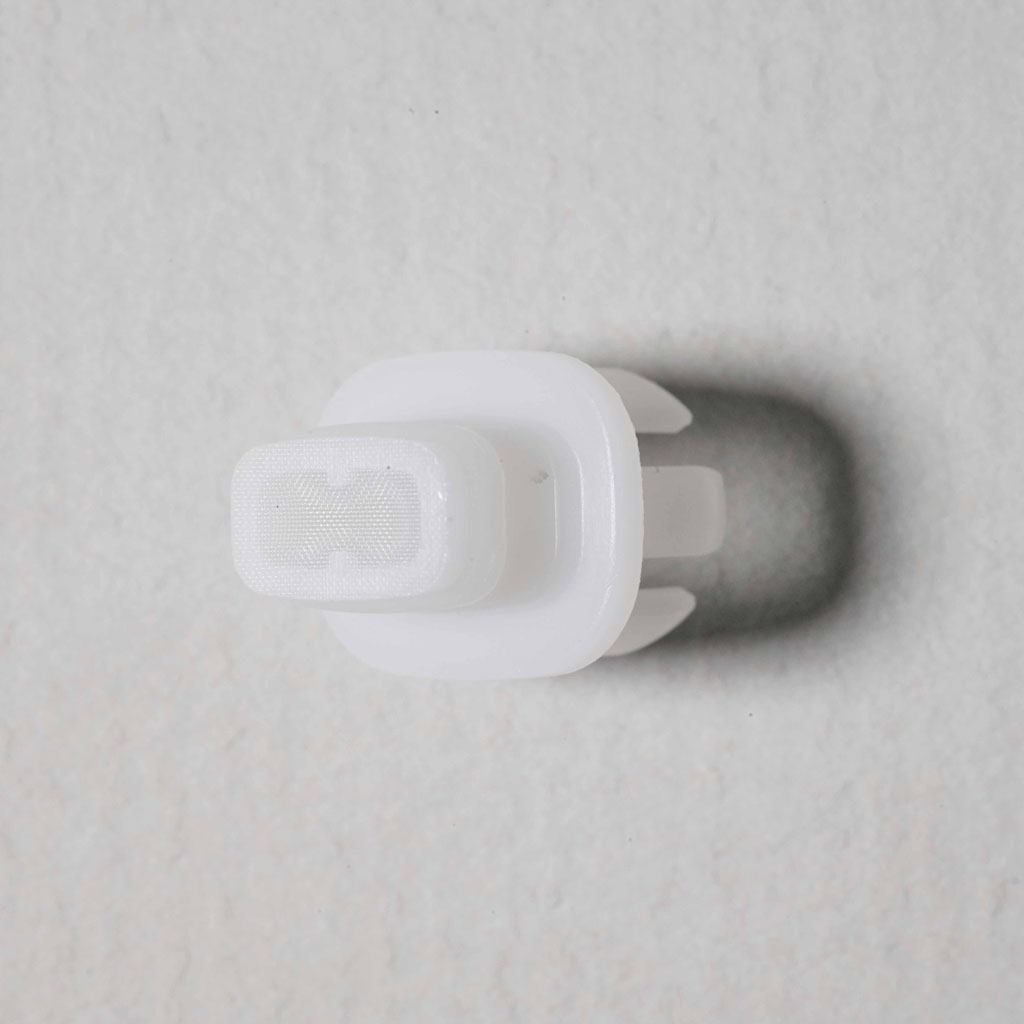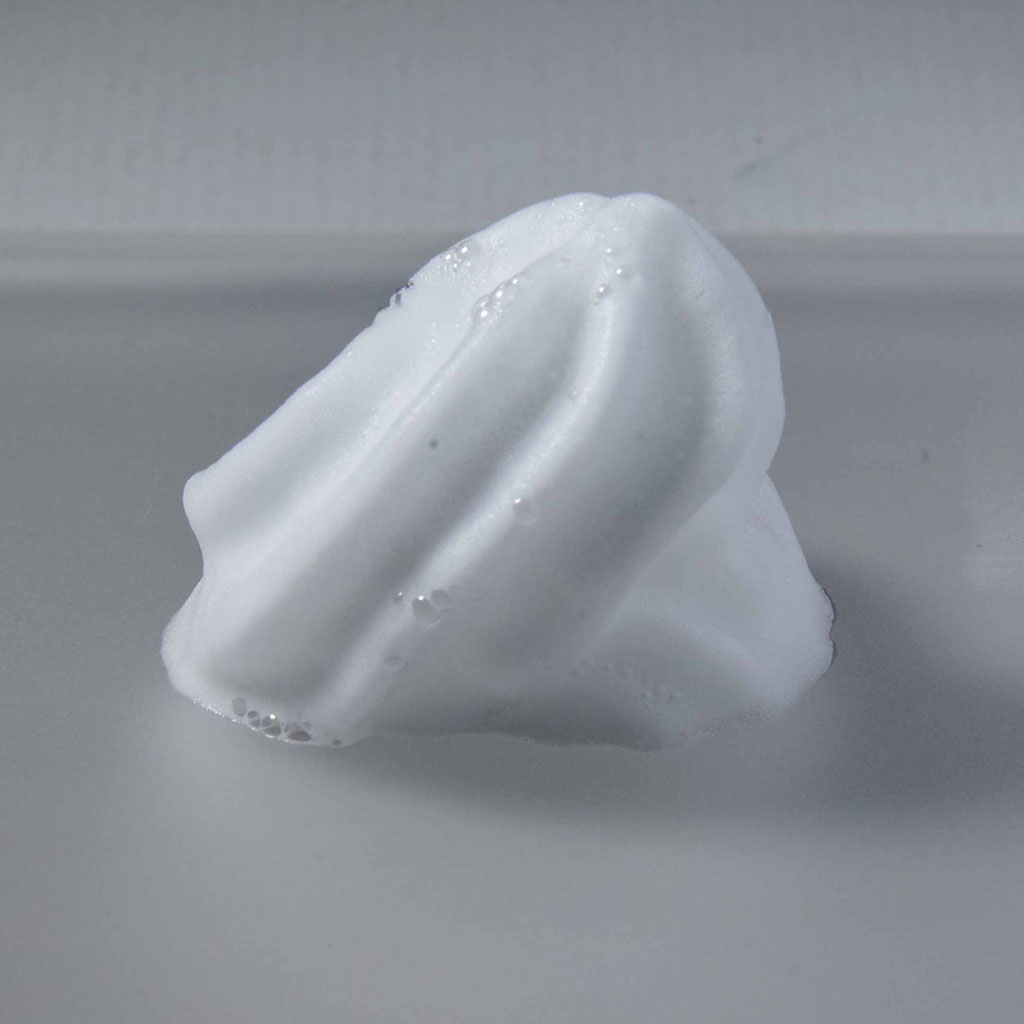The Secret of Delicate Foam
Published on 18 August 2020
Keeping our hands clean is one of the best ways to avoid getting sick. In recent years, many liquid soap companies have launched the foam version of their products. On one pump, the liquid soap from the bottle turns into the foam in your hands. But why it does not have to be contained in a metal spray bottle with pressurised gas? Is the hand soap specially formulated? Or are there other reasons?
I was eager to find out the answer so I took a foam pump apart. (Figure 1) Besides the tubes and springs which can be seen in an ordinary liquid soap pump, I found a small cylinder which had fine mesh at both ends. If the cylinder was taken away, what came out from the nozzle would only be jets of liquid soap instead of foam. This proved that the tiny cylinder was crucial in the foam making process. (Figure 2 and Figure 3)
After that, I successfully made foam by substituting the mesh with cotton pads, scrub sponge, and even the middle layer of a surgical mask. From our observation, the finer the pores are, the smoother the foam will be. Recently, a foaming body wash which advertises itself as cream-like has hit the shelves. The bottle is unique with the addition of an extra mesh layer at the tip of the nozzle. (Figure 4)
Although the foam pump can produce foam from liquid soap, for consistent foam the water-to-soap ratio of the liquid has to be optimised. If it is too thin, the foam produced cannot hold its form. If it is too thick, the liquid soap may block the mesh and produce no foam. The takeaway of this exploratory teardown is that a trivial thing such as hand washing can become more convenient and interesting with the ingenuity of the inventors.


